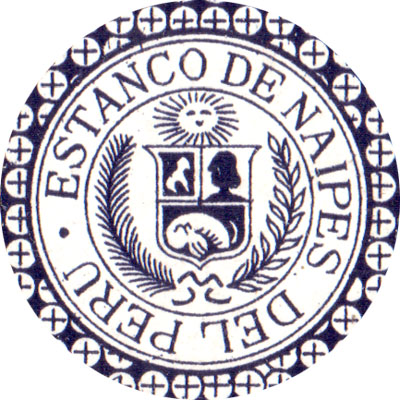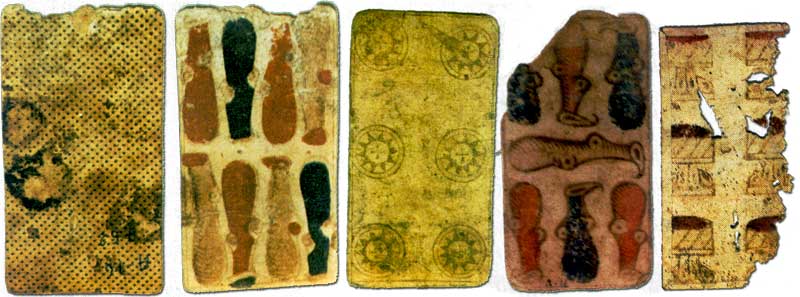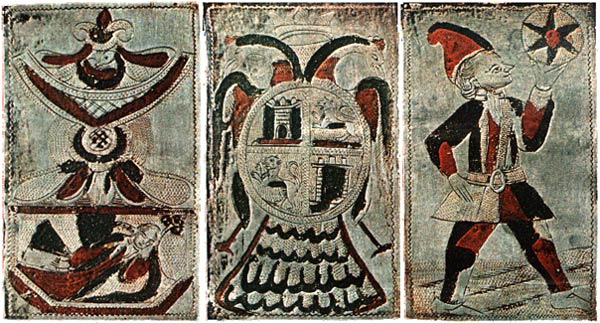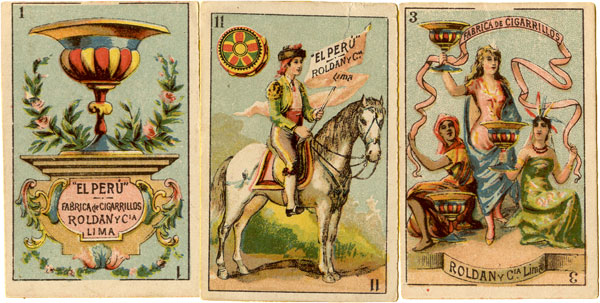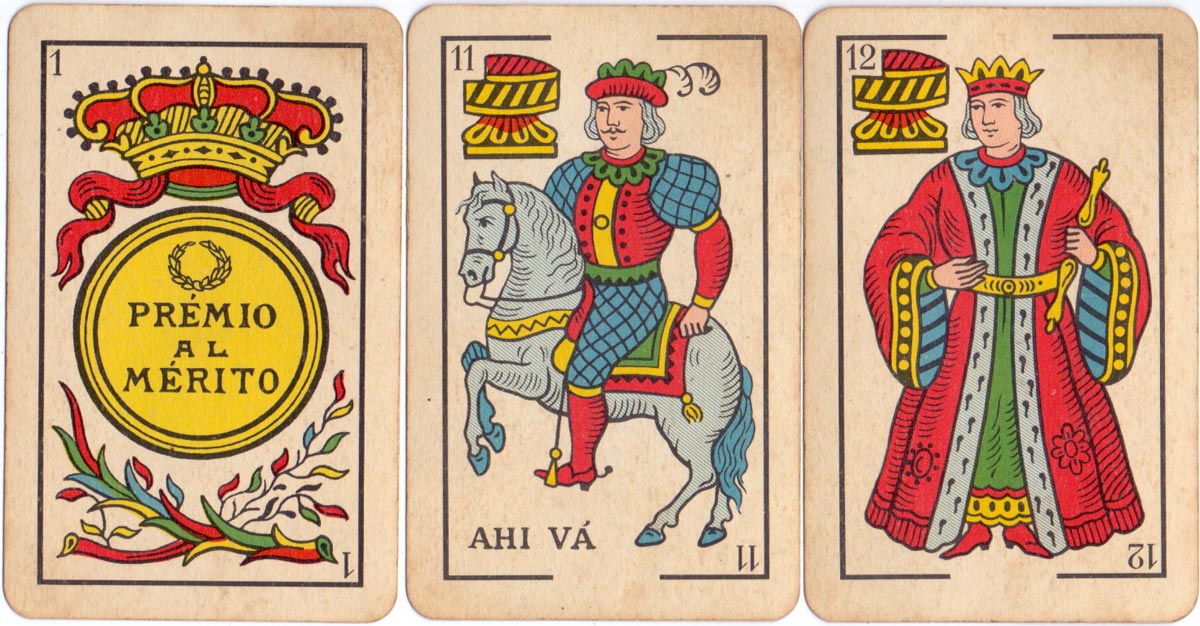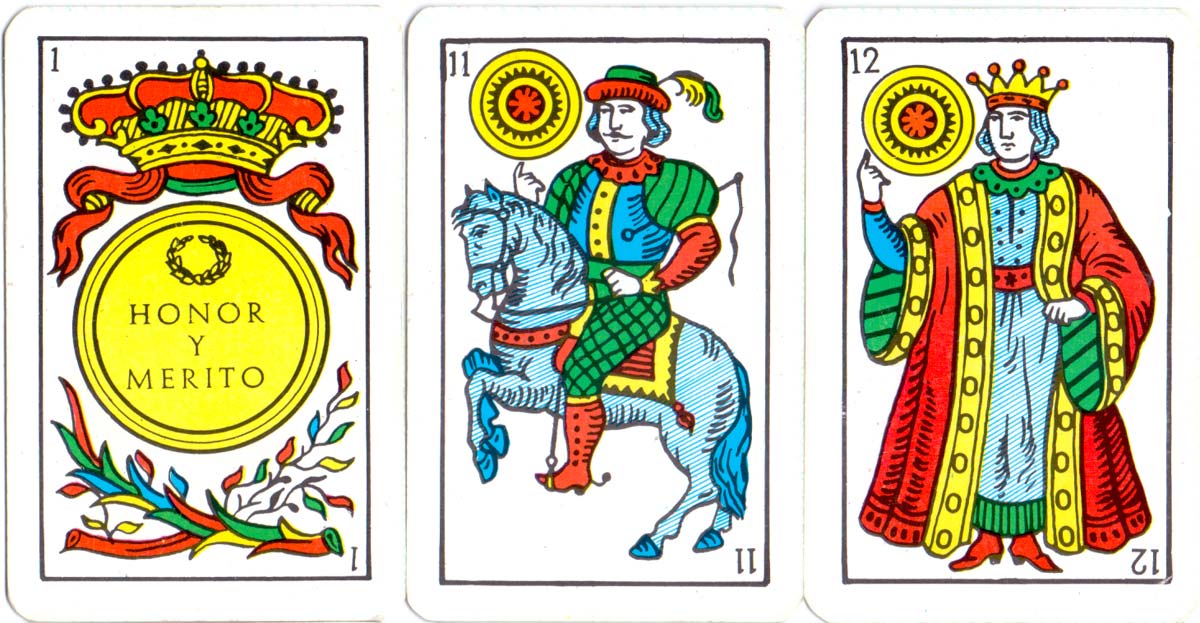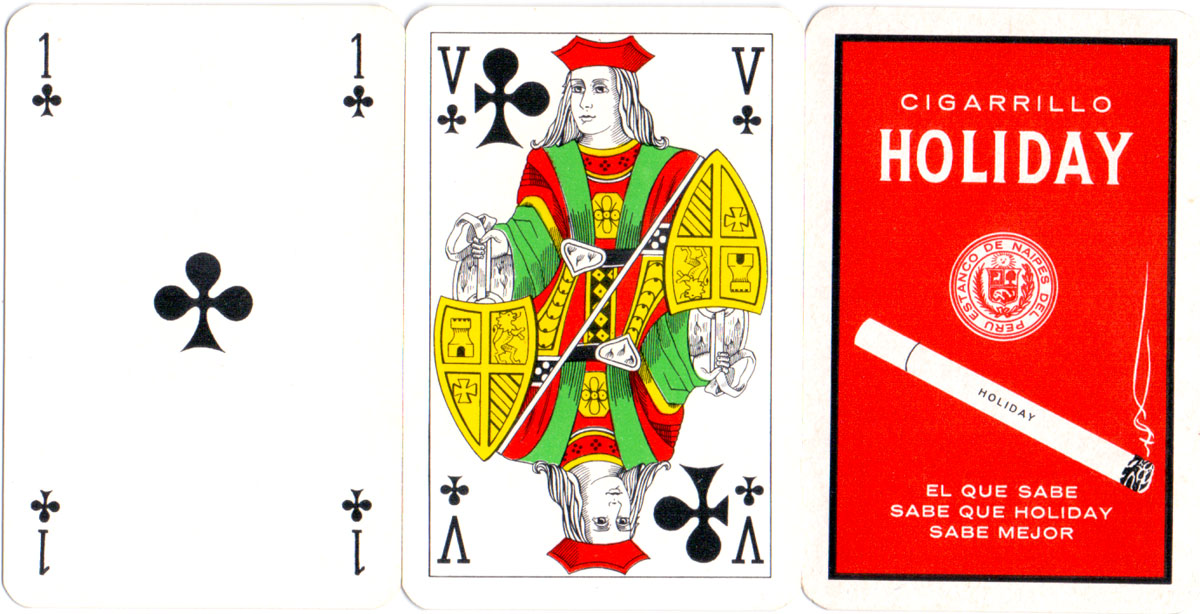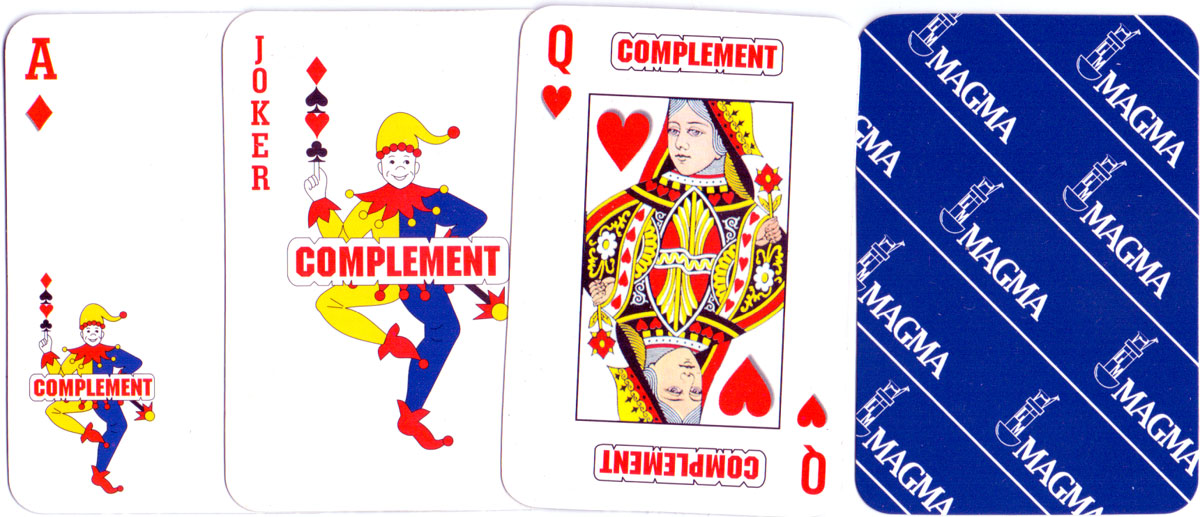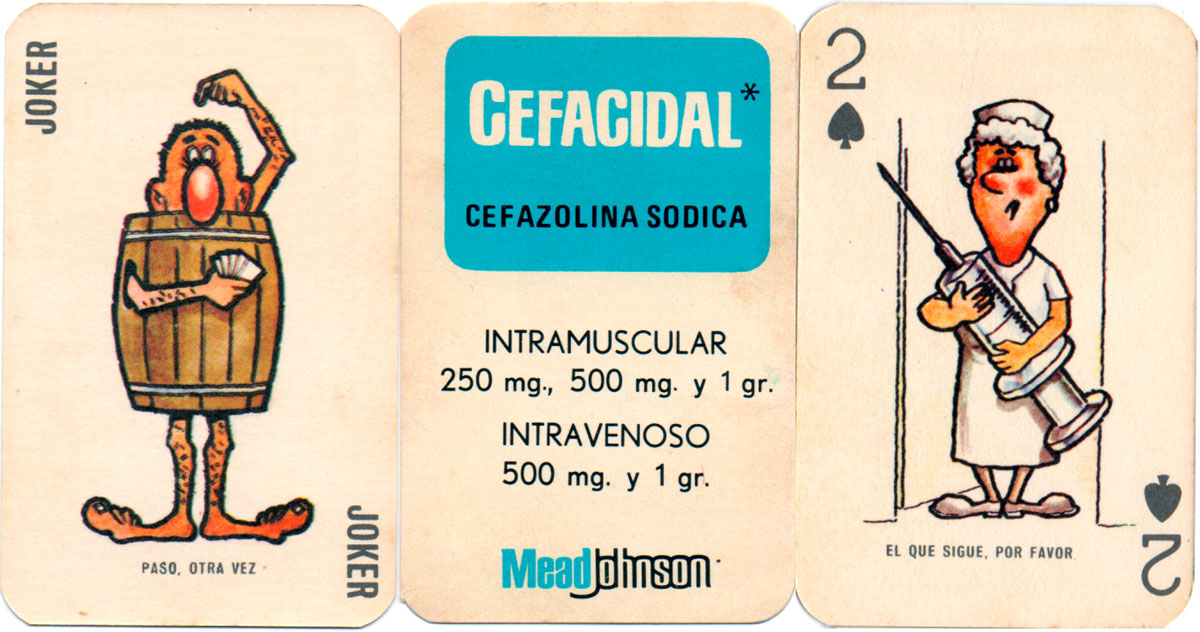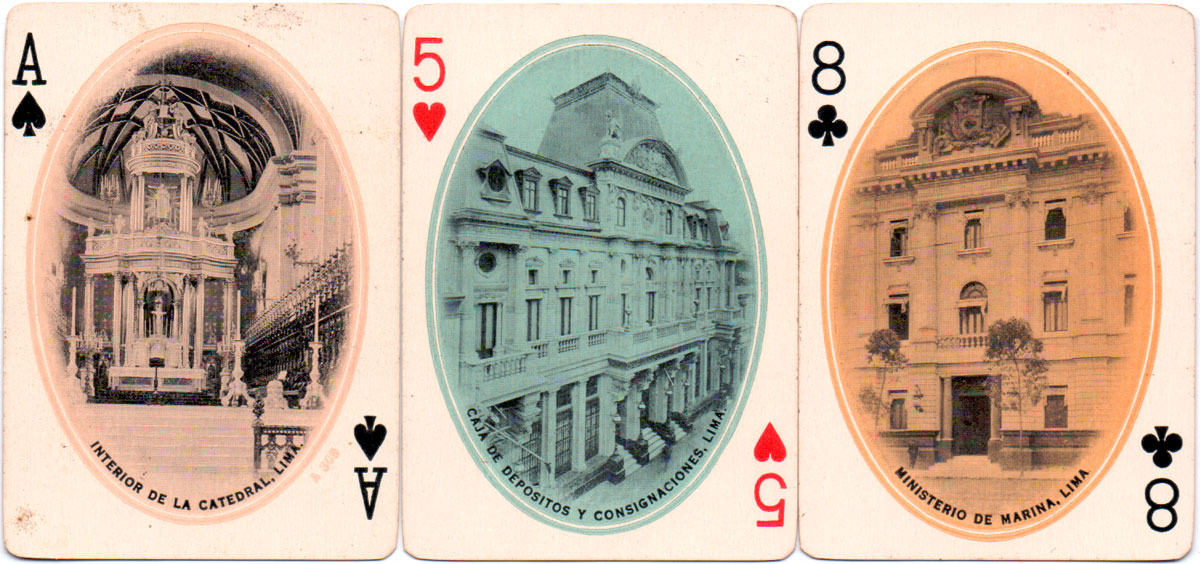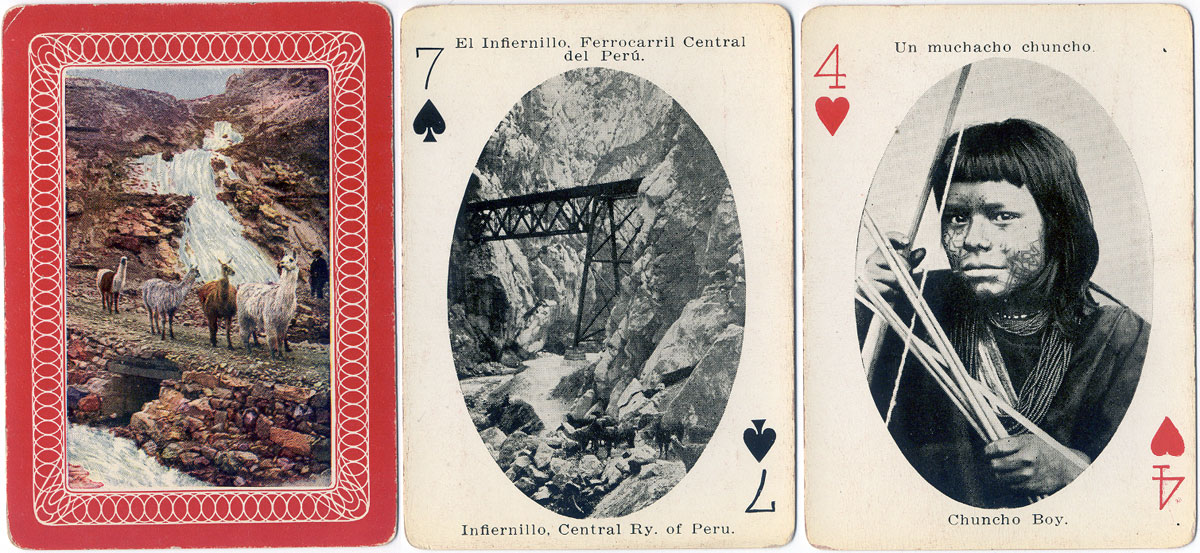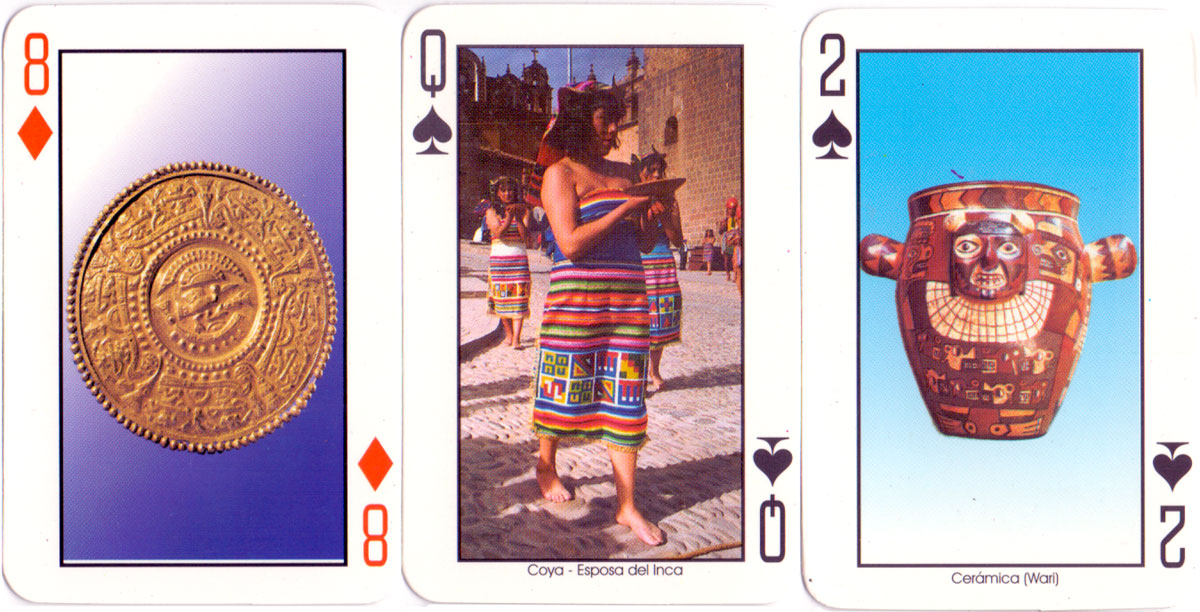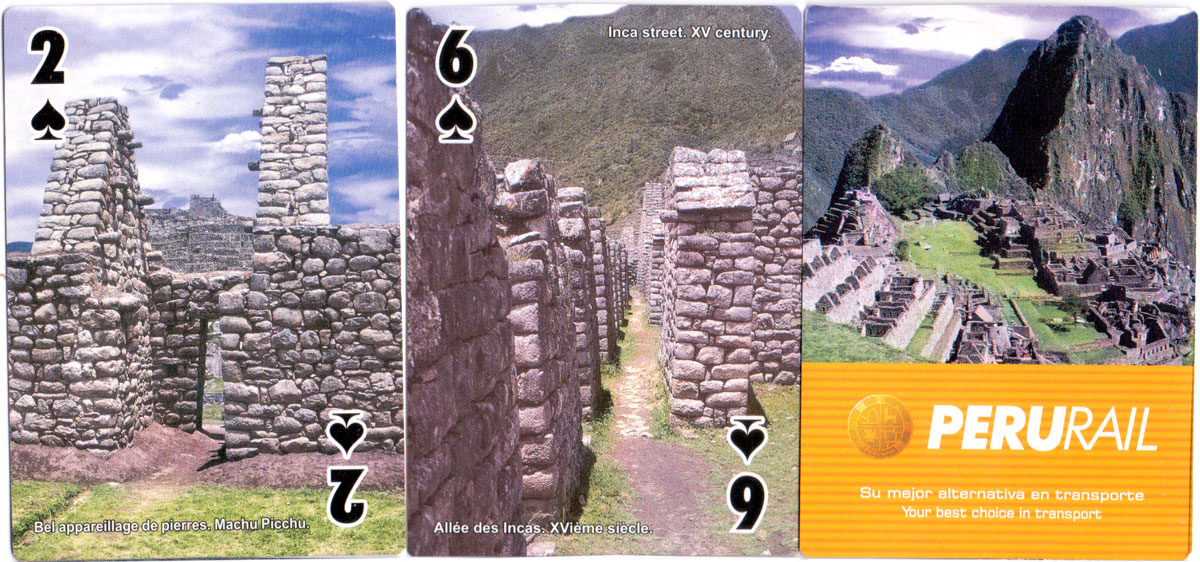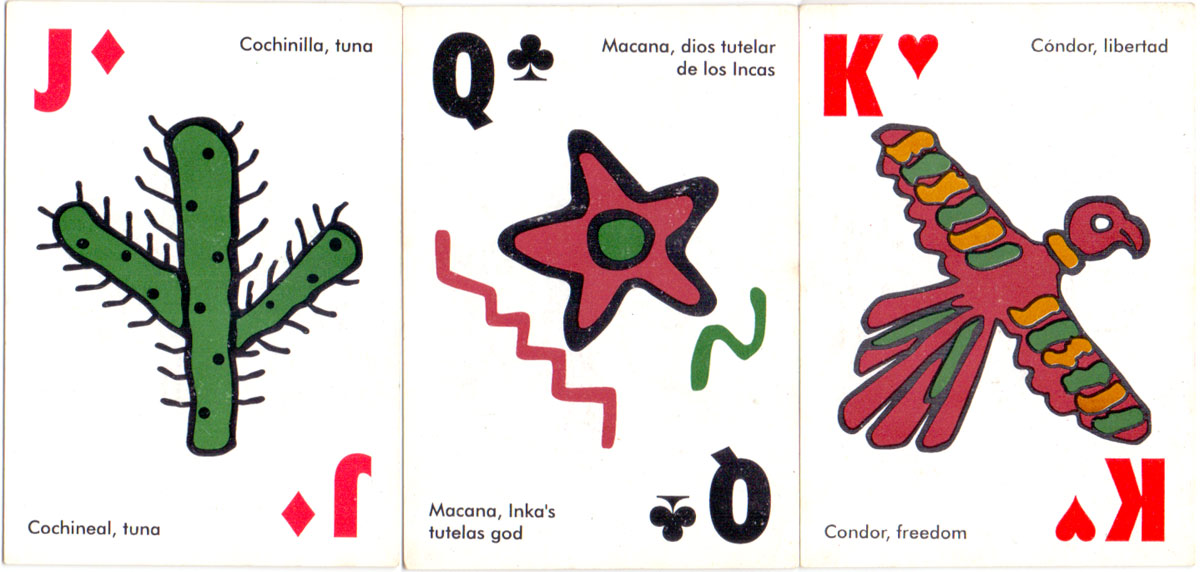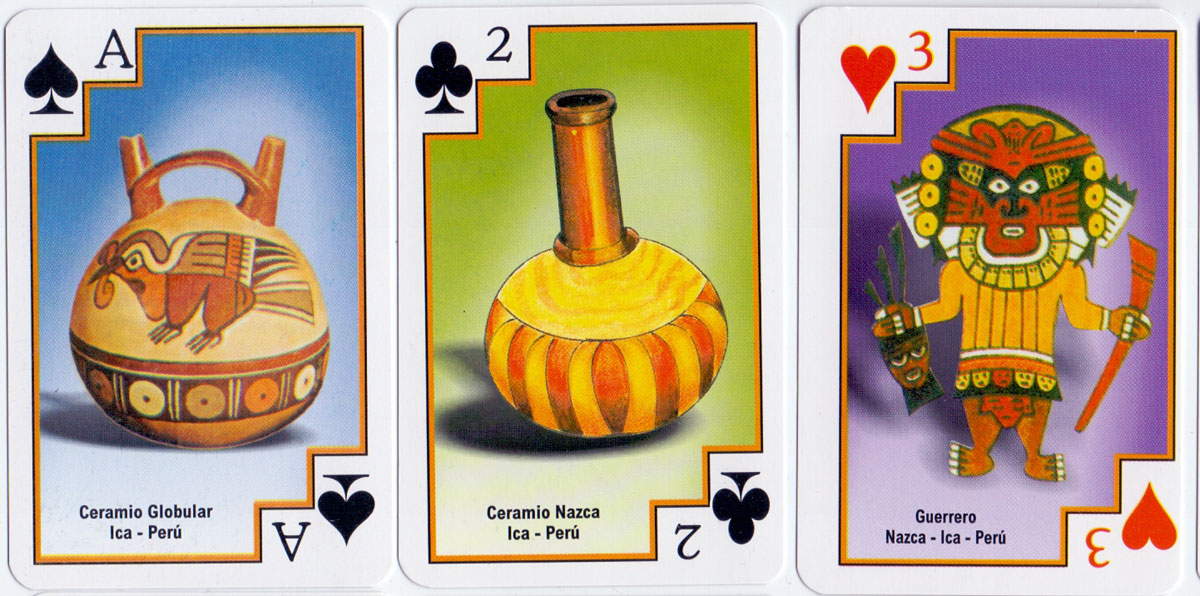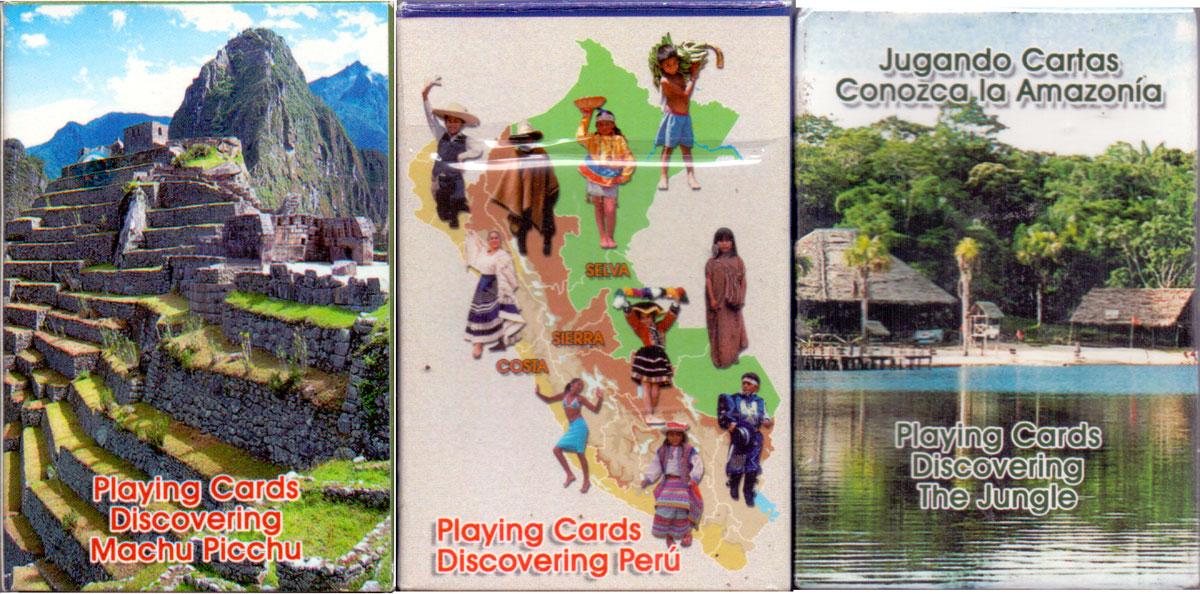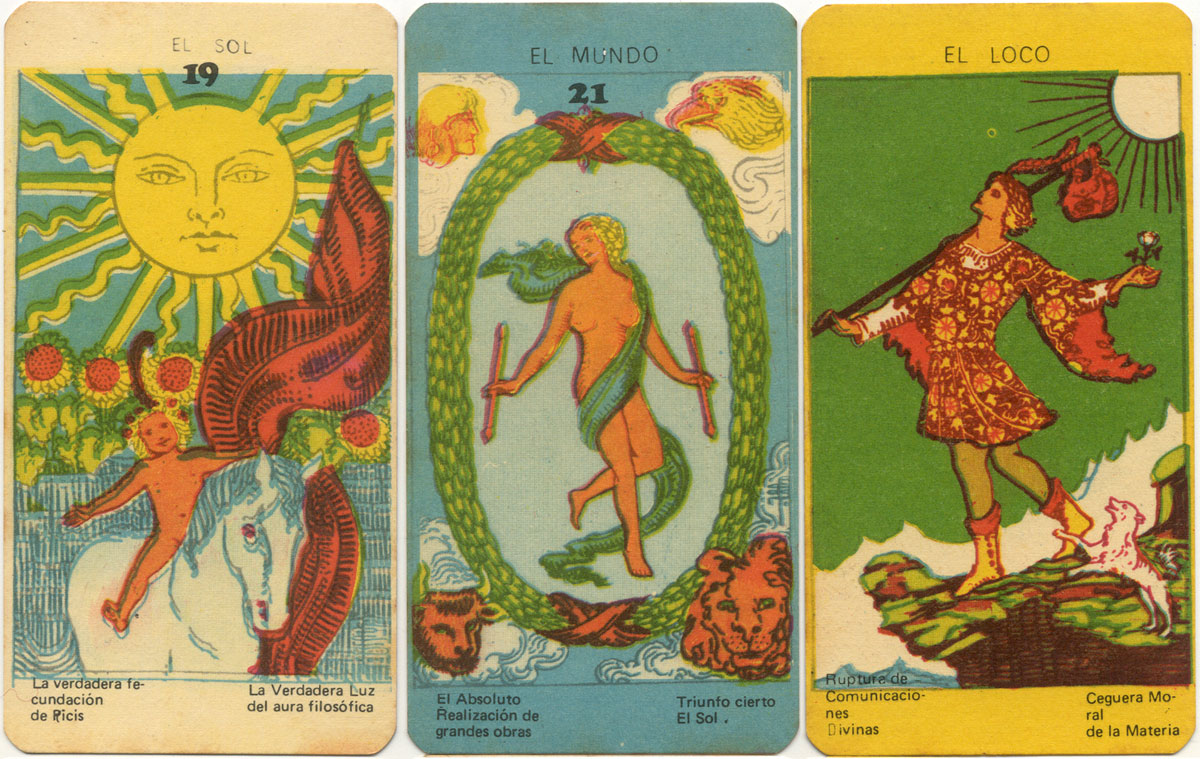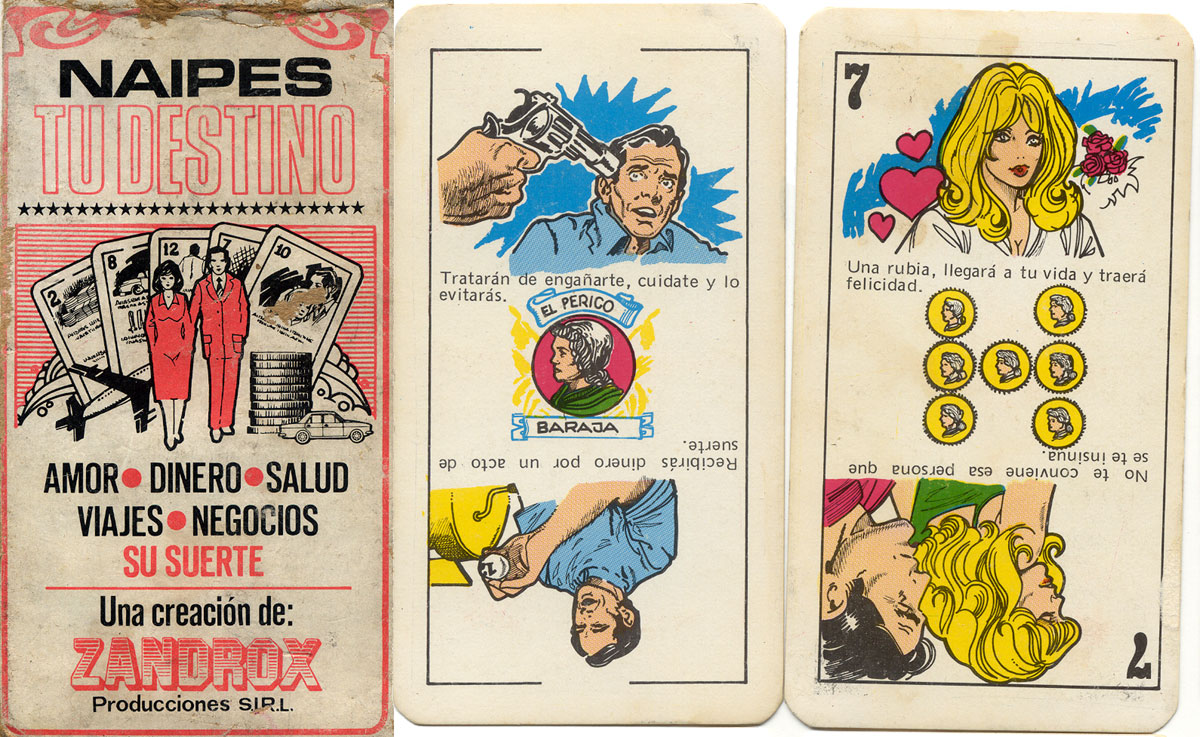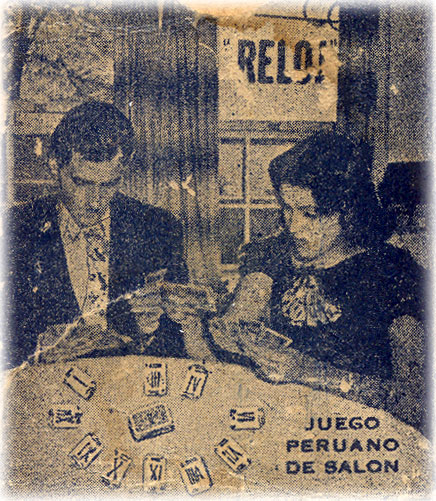Peruvian Playing Cards
Playing cards have been travelling from Spain to South American colonies ever since Christopher Columbus.

Playing cards have been travelling from Spain to South American colonies ever since Christopher Columbus. In 1531 Francisco Pizarro, a Spanish soldier, set sail from Panama with 180 men and 37 horses to conquer Peru for its gold. Huge amounts of silver were extracted from Peruvian mines during the 16th and 17th centuries and shipped back to Spain. At the same time gambling increased. Indeed, archaeological excavations in the Lower Rimac Valley near Lima have unearthed dice and fragments of 16th century Spanish playing cards made in Seville. Thus Peru was supplied with playing cards manufactured in Spain since the 16th century.
Sheets of playing cards were already being produced and sold in Peru by the mid-sixteenth century, but in 1553 their production was prohibited. The first printing press in Peru appeared in 1594, primarily for the purpose of printing Christian doctrine to support evangelism. Others soon followed and output was controlled by the Spanish crown to guard against subversive doctrines. Most of the images were religious and produced in Spain following fashions and tastes of the day. Ornaments include double-tailed mermaids, fish, semi-humans, demons, dragons, etc. At some point local woodcutters or engravers were employed; by 1618 an accusation was made that Francisco del Canto had made counterfeit playing-cards. Clandestine playing card industry was established at an early date.
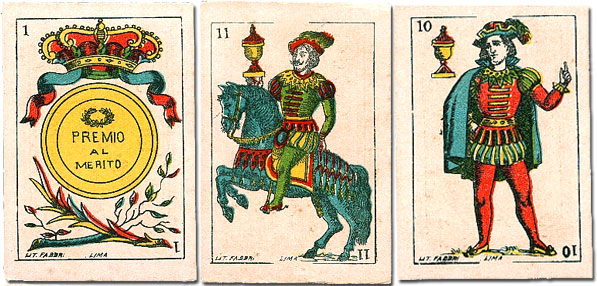
Above: cigarette cards for "La Mutua" tobacco company printed by Litografía Fabbri, c.1900 using the Spanish Cadiz pattern.
The Spanish Cadiz pattern has been used in Peru since before 1900 and has become a sort of Peruvian National Pattern. The Castilian and Catalan patterns are seldom seen. For many years foreign-made cards were imported, including those made for the Estanco de Naipes del Perú, until Peruvian printers began to produce their own.
The Estanco de Naipes del Perú was first established in 1781 and administered by Spanish authorities as a sort of monopoly. Cards were produced in Spain at the Real Fábrica de Macharaviaya. Subsequently the Estanco was devolved to the Peruvian Congress who controlled the playing cards industry until the Estanco de Naipes was finally abolished in 1967.

Above: miniature playing cards inset into tobacco cards, printed by Litografía y Tipografía Fabbri Hermanos, Lima, for Roldan y Cia Tobacco, c.1895.
A number of Peruvian tobacco companies produced collectible insert cards and playing cards to promote their cigarette brands during the late 19th century and early 1900s, many of which are finely lithographed by local printers. In addition there has been a small output of locally-produced packs. Local printers who also produced playing cards include: Color & Trazos ¦ Imprenta Lecaros ¦ Jan Mer S.A.C. ¦ Litográfica del Perú ¦ Litografía Fabbri ¦ Litografía Goicochea Hnos, S.A. ¦ Naipes y Casinos ¦ OBD, S.A. ¦ Offset Cecil S.A. ¦ Pavias ¦ Power Casinos ¦ Zandrox Producciones.
Publicity & Advertising
Tourist Souvenir
Tarot & Cartomancy
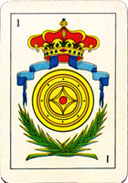 |
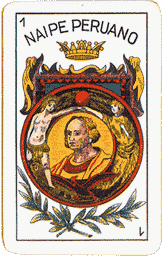 |
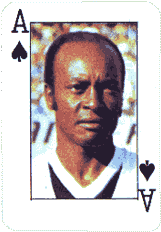 |
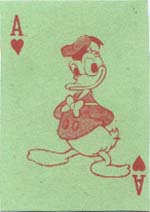 |

Above: “Amos del Universo” superhero card game published by Litografía Goicochea Hnos, S.A., Lima, Peru, c.1980.
Rimac Valley cards | Silver Cards | El Perú Tobacco | Litografía Fabbri | Cigarrillos Compadre | Cigarrillos El Figaro | Cigarrillo Holiday | Imprenta Lecaros 'El Reloj' | Vistas de Lima, c.1910 | Vistas del Perú, c.1920s | OBD | Pavias | Ramses II Tarot | Zandrox Tu Destino | Litográfica del Perú | Cefacidal by Offset Cecil | Laboratorios Magma | Ripley Coca-Cola | Inka Culture | Inka-Dynasty | Cusco Inca Souvenir | Líneas Nazca Souvenir | Fenno Souvenir Cards | Peru Rail Souvenir | Machupicchu playing cards | Spiderman | Nescafé

By Simon Wintle
Member since February 01, 1996
Founder and editor of the World of Playing Cards since 1996. He is a former committee member of the IPCS and was graphics editor of The Playing-Card journal for many years. He has lived at various times in Chile, England and Wales and is currently living in Extremadura, Spain. Simon's first limited edition pack of playing cards was a replica of a seventeenth century traditional English pack, which he produced from woodblocks and stencils.
Trending Articles
Popular articles from the past 28 days
Related Articles
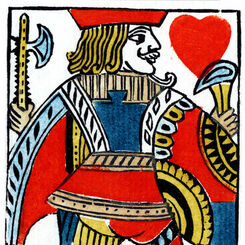
Woodblock and Stencil Jack of Hearts
A limited edition art print of the Jack of Hearts 1984 woodblock joker.
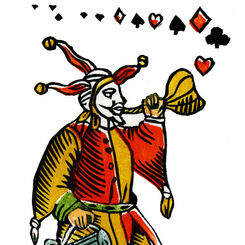
Woodblock and Stencil Joker
A limited edition art print of the 1984 woodblock joker.
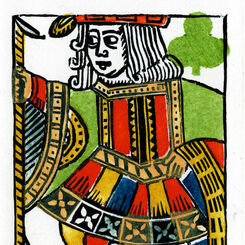
Woodblock and Stencil Jack of Clubs
A limited edition art print of the Jack of Clubs 1984 woodblock joker.
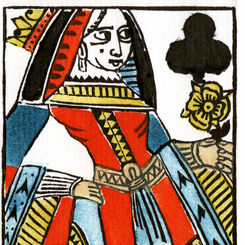
Woodblock and Stencil Queen of Clubs
A limited edition art print of the Queen of Clubs 1984 woodblock joker.
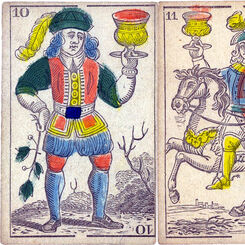
Spanish-suited deck by J.Y. Humphreys
A rare Spanish-suited deck published by J.Y. Humphreys, Philadelphia, c.1816.
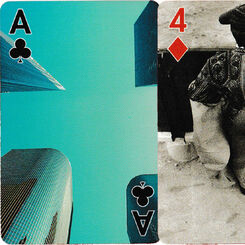
Mario Testino playing cards
A selection of Mario Testino’s photographic work in various fields, notably fashion.
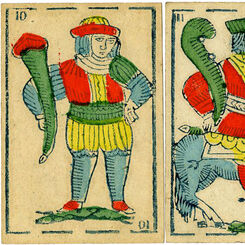
P. Buscaglia: Spanish-suited cards
Spanish-suited cards published by P. Buscaglia, Mele & Genova.
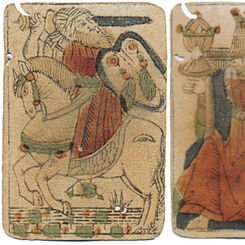
XV Century Spanish-suited playing cards
XV Century Spanish-suited playing cards with moorish influences
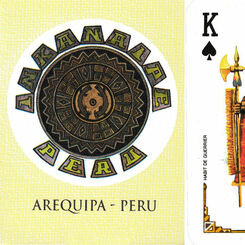
Inka Naipe Souvenir
54 colour photographs of costumes and artefacts connected with the Inca civilisation, unknown publis...
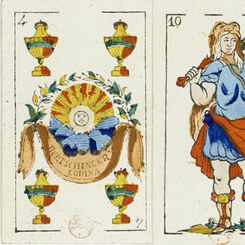
Bertschinger y Codina
Fantasy Spanish-suited playing cards by Bertschinger y Codina (Barcelona), c.1850.
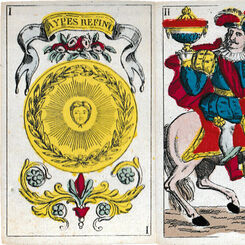
Alphonse Arnoult Spanish-suited pack
Luxurious Spanish-suited pack made by Alphonse Arnoult, Paris, France, c.1850.
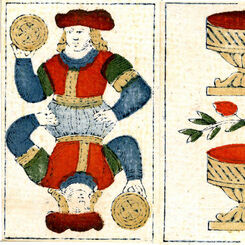
Clemente Roxas double-ended Spanish pack
Double-ended Spanish-suited playing cards published by Clemente de Roxas in Madrid, 1814.
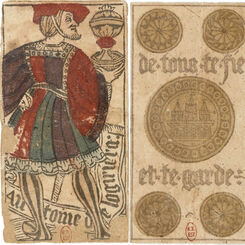
Antoine de Logiriera
Archaic Spanish-suited playing cards published in Toulouse by Antoine de Logiriera (1495-1518).
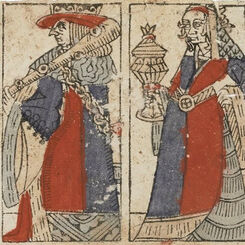
J. Deluy c.1490s
Archaic Spanish-suited cards produced by J. Deluy c.1490s.
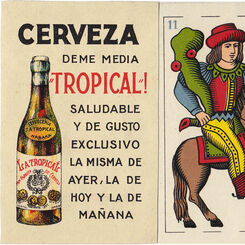
Wüst Spanish pattern
Wüst Spanish pattern c.1910 advertising Cuban ‘Tropical’ beer.
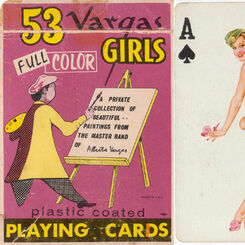
Vargas Girls
‘Vargas Girls’ paintings by Alberto Vargas in a deck of cards published by Creative Playing Card Co ...
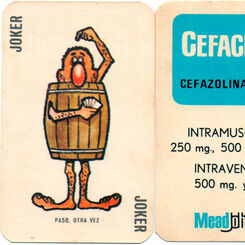
Cefacidal
“Cefacidal” / Mead Johnson medical humour advertising playing cards, c.1975.
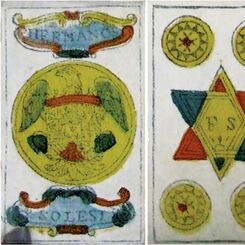
Hermanos Solesio
“Money Bag” pattern by Hermanos Solesi, late 18th c.
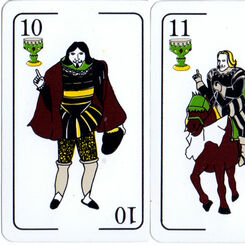
Kem ‘Spanish’ playing cards
Kem ‘Spanish’ playing cards appear to depict Spanish conquistadors © 1994.
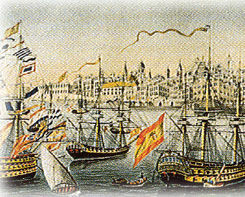
Cádiz Pattern playing cards
Cádiz Pattern playing cards
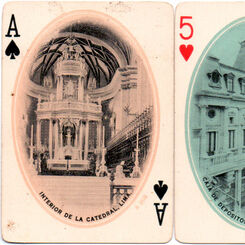
Vistas de Lima
Souvenir of Peru playing cards made by Standard Playing Card Co., Chicago, c.1910
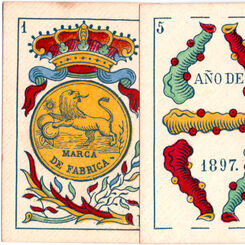
Naipes ‘El Leon’ 1897
Naipes ‘El Leon’ manufactured by Federico Hidalgo (Barcelona, 1897-1899).
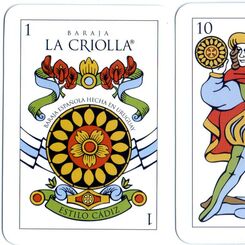
Naipes ‘La Criolla’ by Anabella Corsi
Inspired by an archaic Spanish pattern formerly used in Spain during the 16th and 17th centuries.
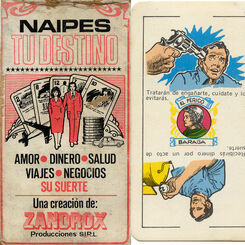
Naipes Tu Destino Cartomancy Cards
“Naipes Tu Destino” Cartomancy Cards from Peru will ease any stress in your interpersonal relationsh...
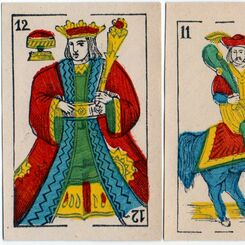
Anon Spanish Cards c.1875
Spanish-suited playing cards made in Belgium by Mesmaekers Frères, c.1875.
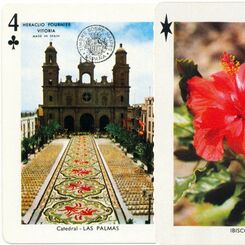
Canary Islands Souvenir
Canary Islands Souvenir by Heraclio Fournier, c.1970.
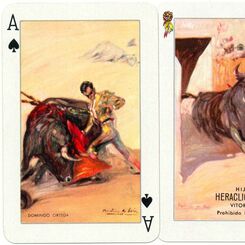
Martínez de León
Bull-fighters pack published by Hijos de Heraclio Fournier, Vitoria (Spain) with artwork by Andrés M...
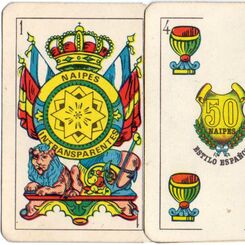
Naipes Españoles “El Mexicano”
Standard Catalan-type deck, titled "El Mexicano", by an anonymous Argentinean manufacturer, c.1980s....
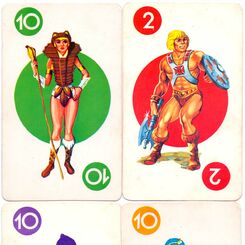
Amos del Universo
“Amos del Universo” card game published by Litografía Goicochea Hnos, S.A., Lima, Peru, c.1980.
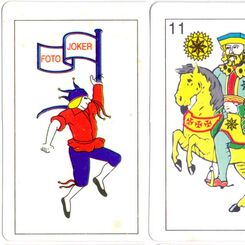
Foto Joker
'Foto Joker' Spanish playing cards for Matera Color Laboratory, 2008.
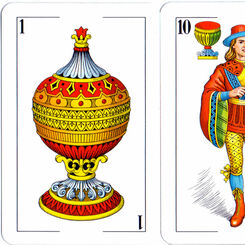
El Jokey by Piatnik, 1990s
‘El Jokey’ Spanish-suited pack by Piatnik & Sons, Vienna, 1990s

Philishave
Spanish-suited advertising deck for Philishave electric razors.

Líneas de Nazca
“Líneas de Nazca” souvenir playing cards, Peru, c.2008.
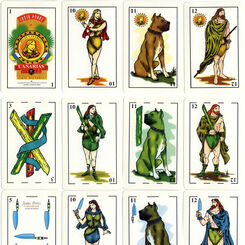
Baraja Canaria
‘La Auténtica Baraja Canaria’ was published in 1995 by Justo Pérez as an expression of the history a...
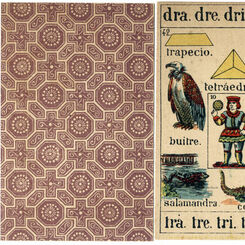
Jaime Margarit - Recreo Infantil
'Recreo Infantil' children's educational cards published by Jaime Margarit, Palamós (Gerona) c.1888....
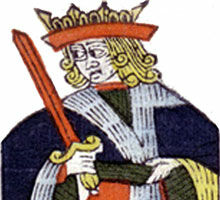
Benoist Laius
Spanish playing cards such as these were used in those parts of France where certain games were enjo...

Leopardo 777 made in Japan for Peru
Leopardo 777 playing cards manufactured in Japan for the Estanco de Naipes del Peru, 1960s.
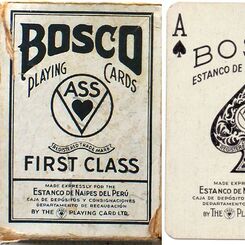
Bosco by A.S.S. for the Estanco de Naipes del Peru
‘Bosco’ Playing Cards manufactured by A.S.S. for the Estanco de Naipes del Peru, 1930s.
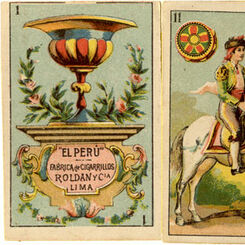
Fabrica de Cigarrillos Roldan y Cia, Lima, Peru
The design of the figures is very agile with excellent colour harmony and execution.

9: Standard English Cards From Latin America: Mexico, Peru, Uruguay and Venezuela
A continuation of the survey of designs used in Central and South America.
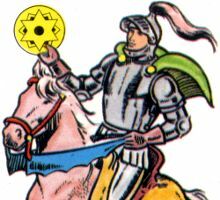
Baraja Edad Media
Baraja Edad Media, fantasy Spanish-suited medieval playing cards published Mas-Reynals, Barcelona, 1...
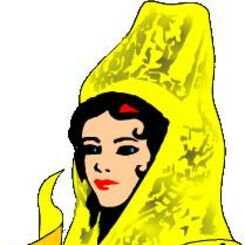
La Española Classic
‘La Española Classic’ is a traditional ‘La Española’ Spanish-suited pack and is produced in several ...
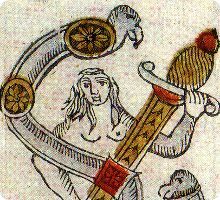
Joan Barbot
Joan Barbot, San Sebastian c.1765-1810.
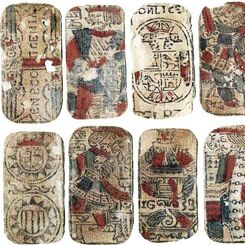
Taxation on Spanish Playing Cards
Taxation on Spanish Playing Cards.


